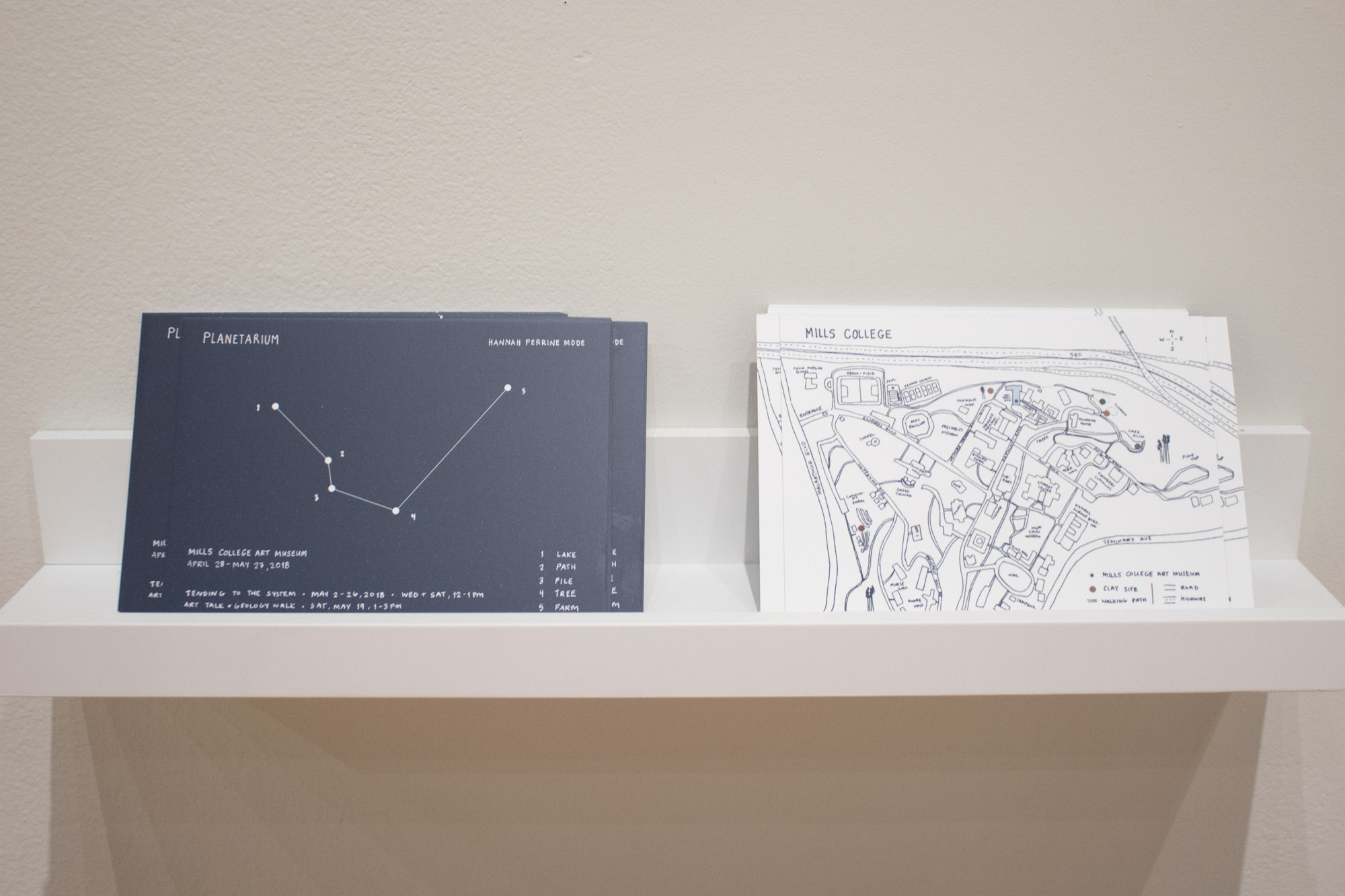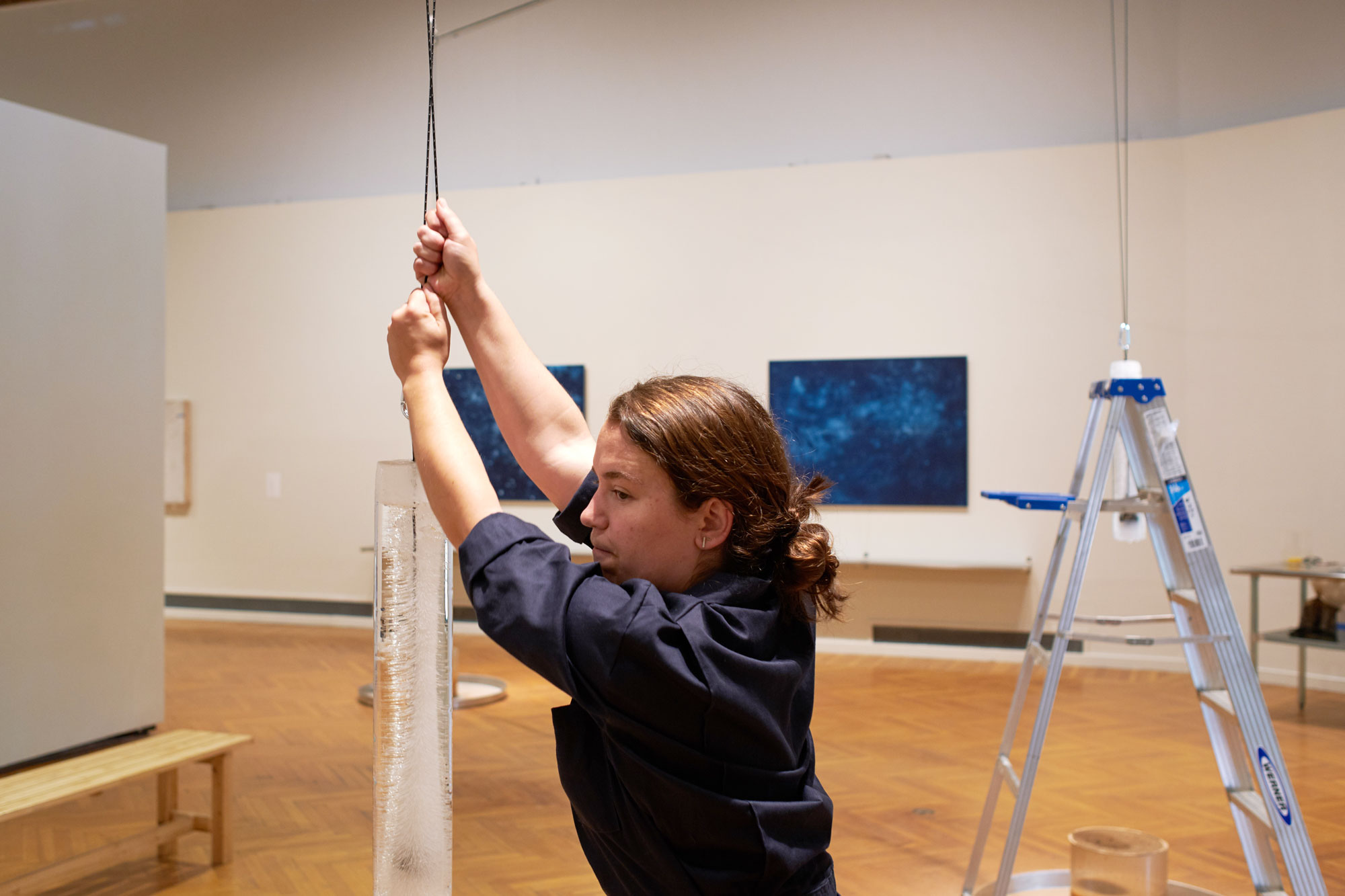For this dynamic installation, I attempted to scale down Earth’s systems (glacier melt, sea level rise, coastal erosion) and geologic time to a human level in the gallery. A “rope team” of five ice core sculptures (made from Oakland tap water, Mendenhall Glacier water, and Antarctic ice core samples) hung above five corresponding slabs of clay (sourced and processed by hand from five different sites outside the gallery on Mills College campus). Twice a week I spent time “Tending to the System,” physically engaging with the installation, to refreeze meltwater (siphoning and recycling the meltwater water with clay run-off in the glass vessels), creating new circular slabs of clay to replace eroded versions, and hanging up new frozen ice core sculptures into the system.
Large scale cyanotype prints corresponded to each clay harvesting site, and were made to record the rocks and residue that I sifted and sorted out of each clay body during the refining process. The eroded clay slabs are placed on the corresponding shelf beneath the print. The clay slabs populated the shelves over the course of the month of the show, acting as a new kind of calendar system to track time in the gallery. Visitors could pick up a map to find the sites where the clay was sourced nearby, and navigate through the gallery space.
The installation explores: The idea of telescopes that are also microscopes (and vice versa) – engaging in close looking to understand vast concepts of geology, time, and our planet; Our human interaction with the environment in new ways, full of empathy and care; The way we create records of women in history and in science (the title Planetarium references Adrienne Rich’s poem of the same name).
materials list
Sites: Lake, Path, Pile, Tree, Farm:
water (Mendenhall Glacier, Juneau + ice core samples, Antarctica + tap, Oakland), stone sourced from Site, utility cord, metal carabiners, steel
clay (sourced and sifted from Site + commercial clay), metal soil sieve, glass vessel, aluminum drip pan, metal shelf
cyanotype on paper (rocks and residue extracted from clay from Site), metal shelf
Workspace:
desk, tools, coveralls, freezer, maps
map
PHASE 1: FREEZING NEW ICE CORES (APRIL 28–MAY 13)
Phase 2: RECYCLING MELTWATER (may 14–27)
Tending to the System
On a bi-weekly basis: recycling meltwater by refreezing it into ice sculptures, hanging new ice sculptures, making new clay slabs to replace the eroded versions, and adding the old clay slabs into the physical calendar in the gallery. Sessions are open to the public, and the artist is available for questions—and welcome conversation—throughout the process.
all Tending to the System photos by Phil Bond and Amy Nathan
CYANOTYPE DETAILS:
Site: Farm, cyanotype on paper (rocks and residue extracted from clay sourced from Site), 44x60in
Site: Lake, cyanotype on paper (rocks and residue extracted from clay sourced from Site), 44x60in
Site: Path, cyanotype on paper (rocks and residue extracted from clay sourced from Site), 44x60in
Site: Pile, cyanotype on paper (rocks and residue extracted from clay sourced from Site), 44x60in
Site: Tree, cyanotype on paper (rocks and residue extracted from clay sourced from Site), 44x60in
CLAY sourcing SITES:
Site: Farm
Site: Lake
Site: Pile
Site: Path
Site: Tree







































